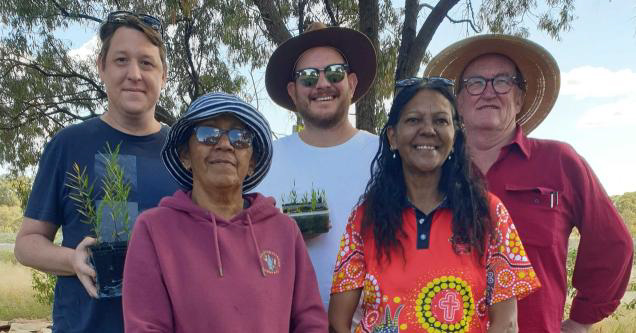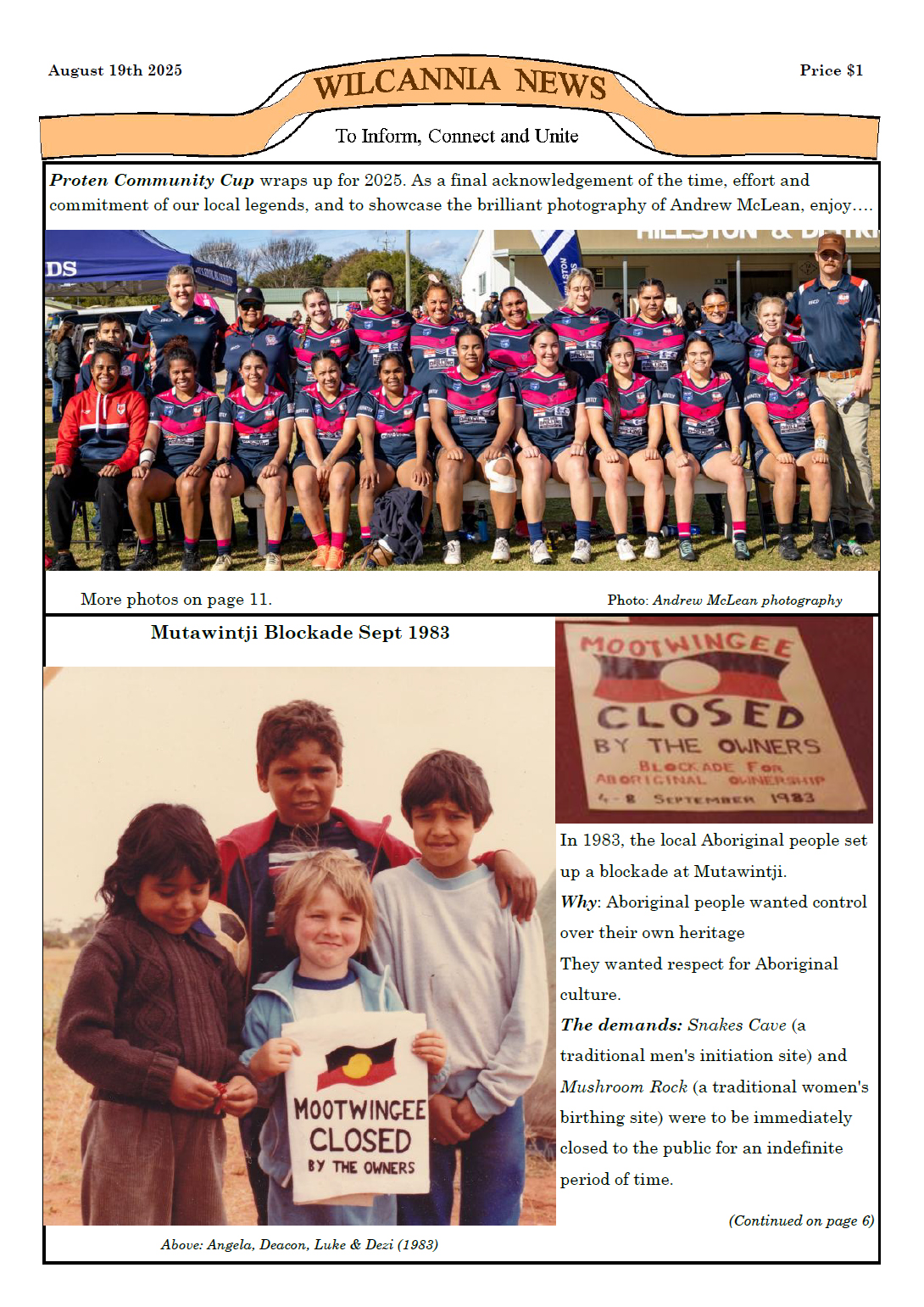Joe, Vince and Chris came to visit from Charles Sturt University (CSU) in Wagga Wagga. They have a project which Joe tells us is…
…”primarily to improve the cultivation of quandongs. So we’re looking to traditional knowledge as well as we’re trying to…..I guess you could say, promote Indigenous people to start growing quandongs again.”
Cultivation = to raise or to care for plants

Photo: Wilcannia News.
Joe: “We’re treading slowly, walking softly… The idea is to work with the people, the knowledge holders and see whether we can register them on an IP so that they own the cultural and intellectual knowledge.”
IP for the quandong = Intellectual Property rights. Allows a person/people to have control of what is done with the quandong tree.
Joe: “It might not be anything scientific but it just shows that First Nations people are connected to the quandong. It’s about other native bush foods as well because the industry has become really huge over the last 5 – 10 years and there’s probably only about 2% Indigenous participation.”

Joe: “It’s another thing that can be stolen, so we’re trying to promote the importance of it to communities so that in the future they might get the benefit out of it. Anything we find out of the project, we’re gonna share the benefits with the communities we work with. Down the track, if someone does go \”Look what I’ve found.\”, and start making a squillion dollars out of it, then someone [a local Aboriginal person] comes along and goes \”This is ours.\” {producing a document}.”
Joe: “There’s something called the Nagoya Protocol* that Australia’s signed but we haven’t ratified. Which means if you come to an area, you need to ask permission to get genetic resources from Native plants. So you have to ask permission from the First Peoples that were here.”

Sunno: They come here and give me the quandongs. I asked if they’re from around here but they’re from Wagga wagga. Different soil…but, they might grow out here. We’re gonna try them out in our soil here, see how they go, see if they can stand the soil here. I just wanna say thanks to the ones who brought the quandong seeds out to our school so we can try and grow em. We’re gonna learn how to try and propagate them ourselves.
Nagoya Protocol
What: When ratified, it is a legally-binding agreement. It says that if a person or company is accessing genetic material, they can’t just make a profit out of it. They must involve the local knowledge holders (Aboriginal people) and ensure they benefit and have a say in what is done with that material.
Nagoya Protocol and AIATSIS Scientific research code of ethics
Specifically: In this situation, the researchers and scientists are accessing the ‘genetic material’ of the Quandong. They are researching how best to get the plants growing and thriving.
These scientists and researchers must ensure that the Aboriginal people, who are the caretakers of the land these quandongs are native to, are supported to gain a legally binding guarantee. This guarantee will see that the Aboriginal people of the area will be involved in the process and/or consulted and/or benefit from any successes of the research and production of the quandong trees.
Finer points: Australia has signed onto this protocol but has not ‘ratified’ it. This means the Government have not taken the last steps to formalise their agreement to this protocol. In the mean time, Western law can be used to make sure the protocol is enacted.
What this means: Local Indigenous people need to ensure they are supported to get an IP for the quandong native to their lands.
This article appeared in Wilcannia News, 19 August 2025.

